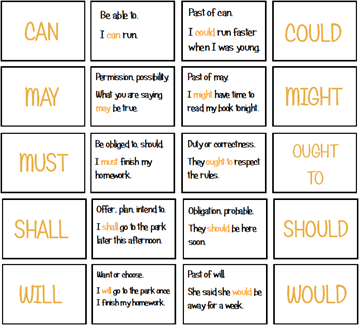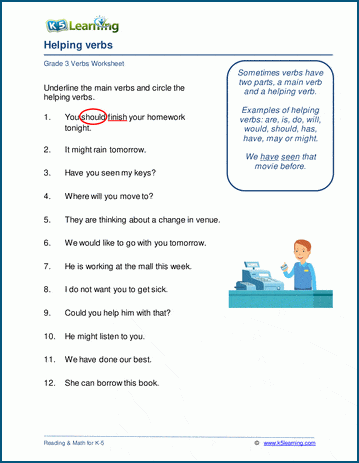What’s a helping verb?
A helping verb (also called an auxiliary verb) is used with a main verb to help express the main verb's tense, mood, or voice.
The main helping verbs are "to be," "to have," and "to do." They appear in the following forms:
To be: am, is, are, was, were, being, been, will be
For example:
They are thinking about a change in venue.
“Are” is the helping verb.
To have: has, have, had, having, will have
For example:
We have done our best.
“Have” is the helping verb.
To do: does, do, did, will do
For example:
Did it work this time?
“Did” is the helping verb.
Modal verbs
There is a group of another kind of helping verb called a modal verb, or modal auxiliary verb. The modal verbs are:

Helping verbs worksheets
Grade 3 students practice auxiliary verbs as part of their grammar curriculum. These worksheets ask students to identify the main verb and its helping verb in sentences.


